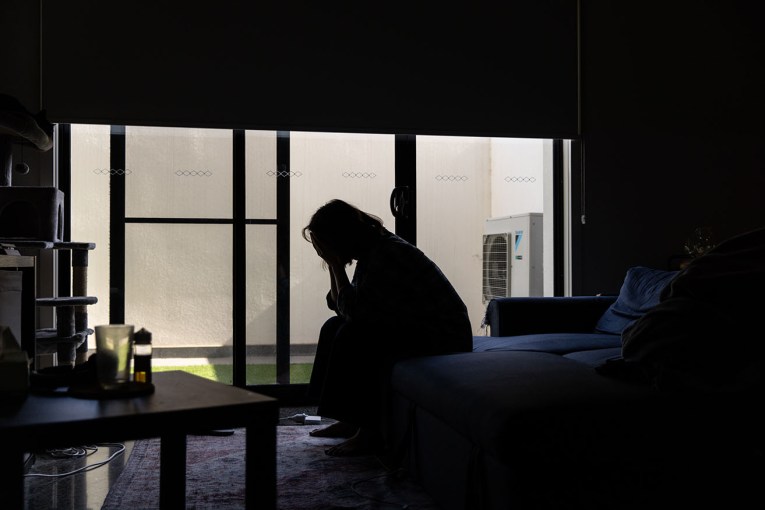Remembering the Sydney-to-Hobart disaster, 20 years on

Dismasted yacht Stand Aside tows a liferaft while stranded in the Bass Strait. Photo: AP
When this year’s Sydney to Hobart fleet sets sail, it will do so bearing the memory of those who lost their lives exactly 20 years ago.
Hobart-based sailor John Saul was there. He skippered Computerland that year and recalls when the race morphed from sport to survival, and adrenaline took over.
“It’s a bit like skidding a car; you don’t think about it when the car’s skidding, you think about it when the car stops,” he said.

John Saul pointed his yacht towards New Zealand to escape the storm that was tearing his boat apart. Photo: ABC News
Saul recalls his boat being battered by the huge southerly buster that struck the fleet the day after Boxing Day.
Wind gusts reached 90 knots and there were reports of waves 25 metres high.
“We knocked the wind gear off the top of the mast in a wave with a knockdown, broke the safety fence around the side of the boat. A fair few things were falling off,” Saul said.
“We were just getting knocked down too much pointing it at Hobart, so we pointed it at New Zealand and she held together.”
Computerland managed to navigate to calmer waters and make it to Hobart relatively unscathed.
“We had good people on board. We made good decisions, and we were bloody lucky. Simple as that,” he said.
Others were not so fortunate. Tasmanian yacht Business Post Naiad was hammered, and two of its crew would perish.

Business Post Naiad, on which two crew died, being cut up for disposal. Photo: Chris Timms
Another entry, the Winston Churchill, was claimed by the Southern Ocean, taking with it three men. Glyn Charles on Sword of Orion also died.
During the mayhem, 55 sailors were winched to safety, in what remains the largest search-and-rescue effort in Australian peacetime history.
‘You could hear the desperation’
When it became apparent the race was no longer one to Hobart, but one for survival, crews retreated to the New South Wales town of Eden.
Barry Griffiths was working as the divisional commander of the Eden volunteer coastal patrol.
He pulled a 32-hour shift that year, manning radios and helping to co-ordinate the rescue effort.

Barry Griffiths recalled the desperation in some of the voices over the radio. Photo: ABC News
There was a terrible lot of screaming. You could hear the desperation in some of the voices.
“Sometimes their radios went dead, and there could have been a multitude of reasons; [they] were dismasted, some lost power or had too much moisture getting into the radio.
“I reckon, looking out the window there, that the top of the waves was nearly as high as this window. It was mountainous seas.”
Griffiths would be one of a multitude of townspeople whose lives would be changed by the events of ’98, as Eden became the centre of the sailing universe.
Kari Esplin is another. She took 16 stricken sailors into her home, providing them with food and shelter.

Kari Esplin had the crew of two yachts sleeping on her family room floor. Photo: ABC News
They slept on the floor of the Esplin family room, and some ended up staying for weeks.
“We couldn’t help with the rescue, but we knew people would need warm drinks, dry clothes and a bed to sleep in,” she said.
Sailors were coming in drenched and desperate, and just needed a refuge.
“They were tying their boats down and trying to get everything back together, and at about 3am we were back picking up people to bring home so they could get a good night’s sleep.
“We are a seafaring town, and we take care of seafarers. It’s part of our history, and I’ve known that since I was a child.”
‘A sad job’

Crane operator Chris Timms broke up one of the boats and returned money and children’s gifts to family in Tasmania. Photo: ABC News
The events of ’98 continue to ripple through the life of crane operator Chris Timms.
After the tragedy, he was given the grisly task of breaking up Business Post Naiad when the insurer declared it unsellable.
It would be a job that would stick with him two decades on.
“Some of the yachts had been out at sea for three or four days, most of them were dismasted,” he said.
“I remember B52 was almost broken in half. We had to make a special cradle to lift her out.
“Business Post Naiad was the saddest one.
“It was a sad job, all their personal belongings were on board. I found a wallet belonging to Bruce Guy with a lot of money in it, which we made sure his wife received.
“And Phil Skeggs had bought two nice keyrings with his children’s names … I sent them off to Tassie to his family.”
‘Something we’ll never forget’
Out of the tragedy came an inquest which saw a Cruising Yacht Club of Australia (CYCA) race director resign, and the Bureau of Meteorology (BOM) increase the depth of its forecasting.
It has become known as the legacy of those who lost their lives in 1998, and has ensured experienced sailors like Skeggs and Guy did not die in vain.
“We’ve put a lot of work into making sure we’ve improved on what was already a pretty safe race,” CYCA past commodore David Kellett said.
“But if you get those extreme conditions, you have to be ready to face it.
“It’s something we think about every time we go through Bass Strait. It’s something we will never forget.
“But we’ve learnt from it and we’re much better prepared for it.”
On the second day of the race, a minute’s silence will be observed by those at sea — remembering those who never made it to port two decades ago.








